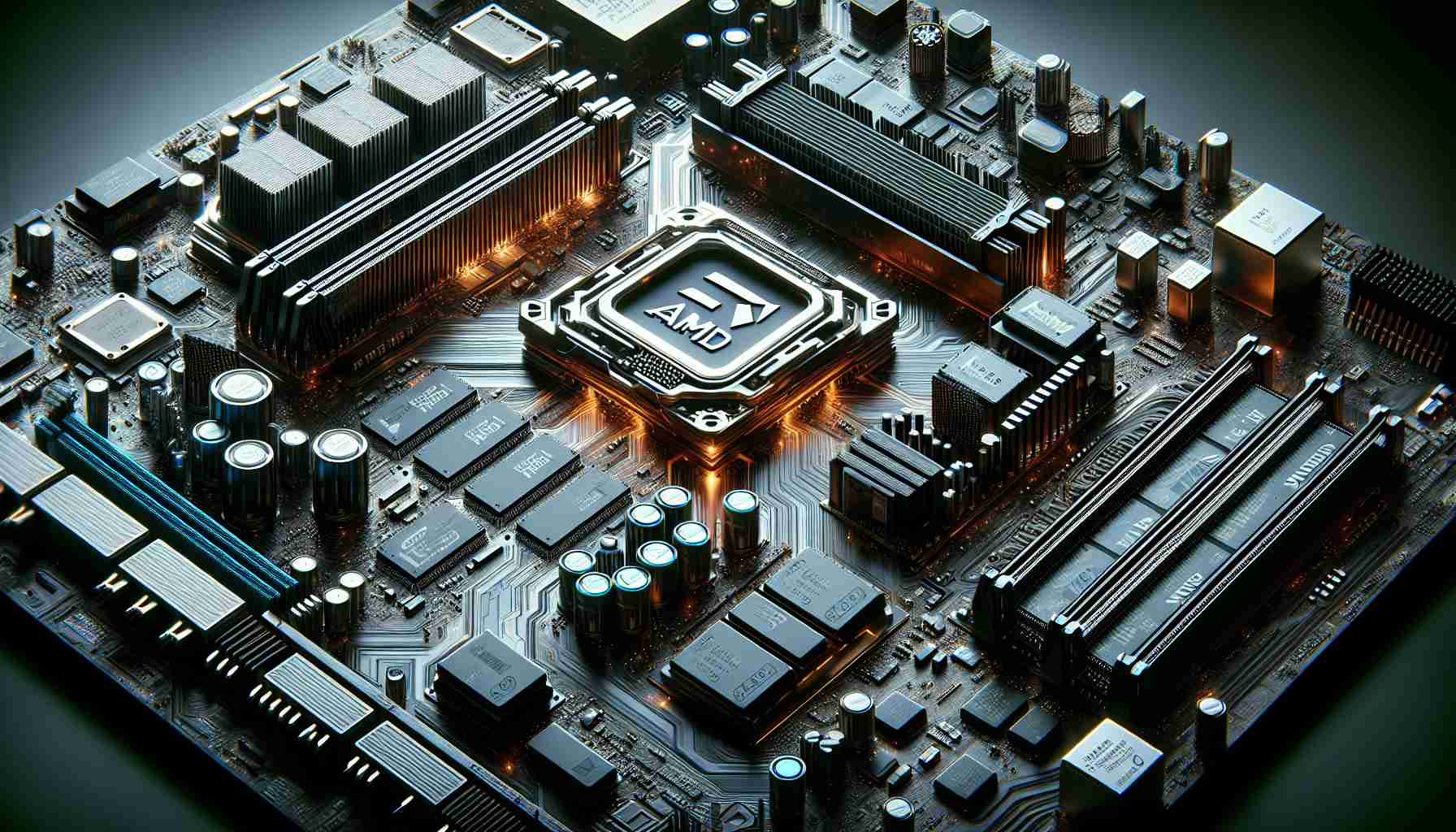AMD Breaks Ground with Next-Generation AI Accelerator and Processors
AMD is forging ahead in the world of artificial intelligence hardware with the announcement of their upcoming innovations set to revolutionize the industry. The company has unveiled the MI325X, a cutting-edge AI accelerator expected to hit the market in 2025. This accelerator promises a leap forward in performance, boasting impressive memory capacity and throughput that surpasses current standards.
Moreover, AMD is set to release the MI350 series of processors later in 2025, designed with a next-generation architecture. These processors provide access to enhanced memory and bandwidth capabilities, propelling them ahead of competitors like NVIDIA’s Blackwell series. Following in 2026, AMD plans to introduce the even faster MI400 series, continuing the momentum of innovation.
In addition to the advanced hardware offerings, AMD has introduced the AMD Pensando Pollara 400 Ethernet accelerator, catering to AI networking needs. This accelerator offers blazing-fast data transfer speeds, empowering AI teams with efficient communication between GPU nodes.
AMD’s commitment to open-source software is highlighted by CEO Dr. Lisa Su, emphasizing the company’s strategic approach to gaining market share without restricting customers to specific architectures. By leveraging their success in CPU technology, AMD aims to secure more GPU deals and solidify their presence in the AI hardware landscape.
With a focus on enhancing performance and efficiency through their ROCm software stack, AMD is poised to make a significant impact in the AI hardware market. The future success of AMD, NVIDIA, and other competitors ultimately hinges on the choices made by developers in selecting the most innovative and adaptive hardware solutions for their AI applications.
Additional Facts:
– AMD’s innovations in AI hardware are crucial for the development of cutting-edge technologies such as autonomous vehicles, healthcare diagnostics, natural language processing, and image recognition.
– The MI325X AI accelerator is expected to bring advancements in deep learning, machine vision, and data analytics applications.
– AMD’s approach to open-source software aims to foster collaboration and innovation within the AI hardware community.
Key Questions:
1. How do AMD’s AI hardware innovations compare to offerings from competing companies like NVIDIA and Intel?
2. What specific features of the MI325X accelerator and MI350 series processors differentiate them from existing products in the market?
3. How will the introduction of the Pensando Pollara 400 Ethernet accelerator impact AI networking infrastructure and performance?
Challenges and Controversies:
– One key challenge for AMD may be achieving widespread adoption of their new AI hardware solutions, especially in a market dominated by established players like NVIDIA.
– Controversies could arise regarding the compatibility and integration of AMD’s hardware with existing AI ecosystems, raising concerns about performance optimization and cost-effectiveness.
Advantages and Disadvantages:
– Advantages: AMD’s innovative AI hardware solutions offer increased performance, memory capacity, and efficiency, enhancing the capabilities of AI applications. Their commitment to open-source software promotes flexibility and collaboration.
– Disadvantages: Potential disadvantages may include challenges related to market acceptance, competition with industry giants, and the need for developers to adapt to new hardware architectures and software frameworks.
Related Links:
– AMD Official Website



